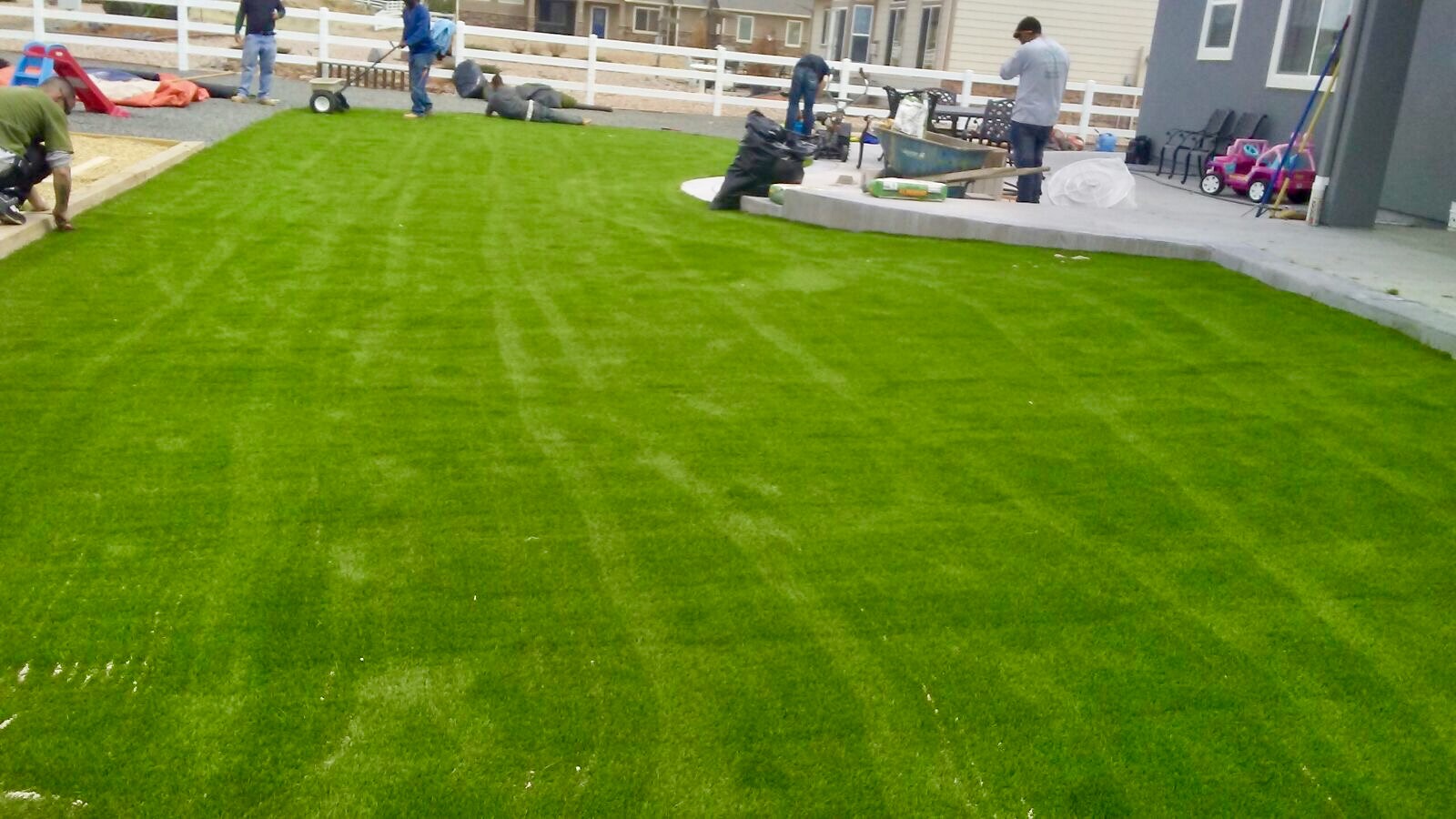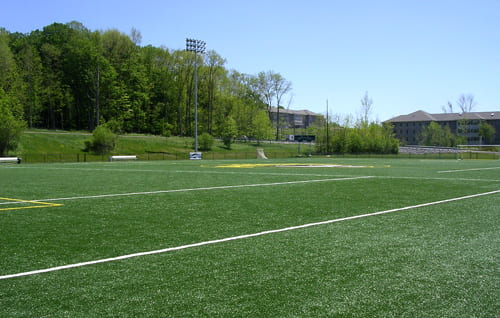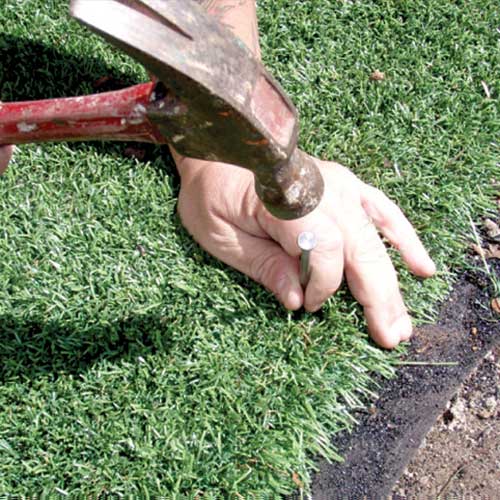Look Into the Environmental Benefits of Opting for Synthetic Grass Solutions
The adoption of fabricated grass remedies offers a compelling opportunity to attend to pressing environmental challenges. By considerably minimizing water use and reducing the application of unsafe chemicals, these alternatives not only promote lasting landscape design however likewise safeguard local environments.
Water Preservation Advantages
One of the most significant advantages of synthetic grass is its capability to save water. Conventional lawn yards call for significant irrigation, particularly in areas susceptible to drought or water restrictions. On the other hand, artificial lawn does not require watering, dramatically lowering the overall demand for water sources. This function is particularly advantageous in deserts where water deficiency is a pushing issue.
By eliminating the need for regular watering, synthetic grass contributes to sustainable landscape practices and aids reduce the environmental impact of extreme water intake. Furthermore, the conservation of water expands to the reduction of overflow, which can bring about dirt erosion and river pollution.
In addition, the installation of synthetic grass allows home owners and municipalities to assign water sources a lot more efficiently, focusing on vital usages such as drinking water and farming. The change in the direction of synthetic grass not just advertises responsible water usage but likewise aligns with wider environmental objectives focused on protecting all-natural sources.
As communities increasingly prioritize sustainability, the water preservation benefits of synthetic grass offer a compelling case for its fostering in household and business landscaping tasks.
Reduced Chemical Usage
The shift to fabricated lawn considerably lowers the dependence on chemical therapies typically utilized in all-natural yard maintenance. Traditional lawn management generally involves the application of chemicals, herbicides, and fertilizers to promote development and control parasites. These chemicals can pose threats to human health and wellness, regional wildlife, and the atmosphere, contributing to dirt and water contamination.
In comparison, synthetic grass gets rid of the need for these unsafe materials. When set up, it requires marginal upkeep, primarily containing normal cleansing and infrequent infill replenishment. This decrease in chemical usage not just profits the prompt atmosphere yet likewise adds to broader eco-friendly stability. By decreasing the launch of synthetic substances into the ecosystem, man-made grass promotes much healthier soil and water supply.
Moreover, the absence of chemical drainage connected with man-made turf setups aids safeguard local rivers from pollution, supporting marine life and preserving biodiversity. Arizona turf. As communities progressively focus on lasting practices, selecting synthetic grass presents a viable remedy that lines up with environmental preservation objectives. Via this shift, homeowner can appreciate rich eco-friendly rooms without endangering eco-friendly health and wellness, leading the way for an extra lasting future
Reduced Carbon Footprint

Additionally, the installment of synthetic grass can result in considerable water preservation. All-natural grass call for considerable amounts of water for watering, which not only contributes to the carbon footprint connected with water extraction and my link therapy however likewise stress regional water sources. On the other hand, artificial lawn needs minimal upkeep, needing no watering, consequently substantially lowering water use and its associated energy expenses.
Additionally, the longevity of synthetic turf adds to its decreased carbon influence. With a life expectancy of up to 15 years or more, the requirement for frequent substitutes is decreased, leading to less waste and reduced energy consumption in manufacturing and getting rid of conventional turf options. Generally, man-made grass presents a lasting alternative for environmentally aware landscape design.
Habitat Conservation
Environment conservation is an essential factor to consider in the argument over landscape design options, specifically when contrasting synthetic grass to all-natural turf. Natural grass yards typically require extensive upkeep, consisting of making use of chemicals, plant foods, and herbicides, which can detrimentally impact neighborhood ecological communities. These chemicals can seep into the soil and rivers, hurting indigenous plants and animals and interrupting neighborhood habitats.
In contrast, synthetic grass offers a chance to lower the environmental footprint of landscape design. By selecting artificial yard, property owners can reduce the disturbance of natural habitats linked with conventional grass care methods. Synthetic grass gets rid of the need for hazardous chemicals, thus securing neighboring wild animals and maintaining the stability of bordering ecosystems. The installation of man-made grass can lead to the conversion of previous yard areas into more biodiverse landscapes, such as pollinator gardens or native plant locations, which can support local wildlife.
Inevitably, the change to fabricated lawn not only conserves water and reduces maintenance initiatives yet additionally fosters a much more harmonious relationship in between human activities and the natural surroundings, advertising habitat conservation in the procedure.
Long-Term Sustainability
Long-lasting sustainability is a critical consider assessing the advantages of artificial lawn over typical lawn yards. Among one of the most significant advantages of synthetic grass is its toughness; it can last as much as 15-20 years with minimal upkeep, whereas natural grass calls for frequent reseeding and substitute. This durability reduces the need for consistent resources, such as water, plant foods, and pesticides, which are essential for maintaining a healthy and balanced turf yard.
Furthermore, synthetic grass contributes to a reduction in carbon emissions related to lawn treatment devices. Traditional yards frequently call for gas-powered lawn mowers, leaners, and blowers, every one of which contribute to air contamination. Turf installation phoenix az. On the other hand, artificial grass removes the need for such devices, advertising a cleaner setting
Furthermore, straight from the source the manufacturing of synthetic grass significantly makes use of recycled materials, improving its sustainability account. As manufacturers embrace green methods, the ecological impact of artificial grass remains to reduce.

Final Thought
The adoption of synthetic turf solutions provides significant ecological advantages, consisting of significant water conservation, lowered reliance on harmful chemicals, and a reduced carbon footprint. Furthermore, synthetic grass help in preserving all-natural environments by This Site minimizing land disturbance and advertising long-term sustainability via the usage of sturdy materials. Jointly, these factors emphasize the potential of synthetic grass to contribute positively to ecological health and wellness and supply a practical option to typical landscaping techniques in an increasingly resource-conscious world.
In comparison, fabricated turf does not need watering, significantly minimizing the total need for water sources. By reducing the release of synthetic compounds right into the ecological community, artificial grass advertises much healthier soil and water systems.
Furthermore, the setup of synthetic lawn can result in considerable water preservation. In comparison, man-made turf needs minimal maintenance, requiring no watering, thus considerably minimizing water use and its connected energy expenses.
